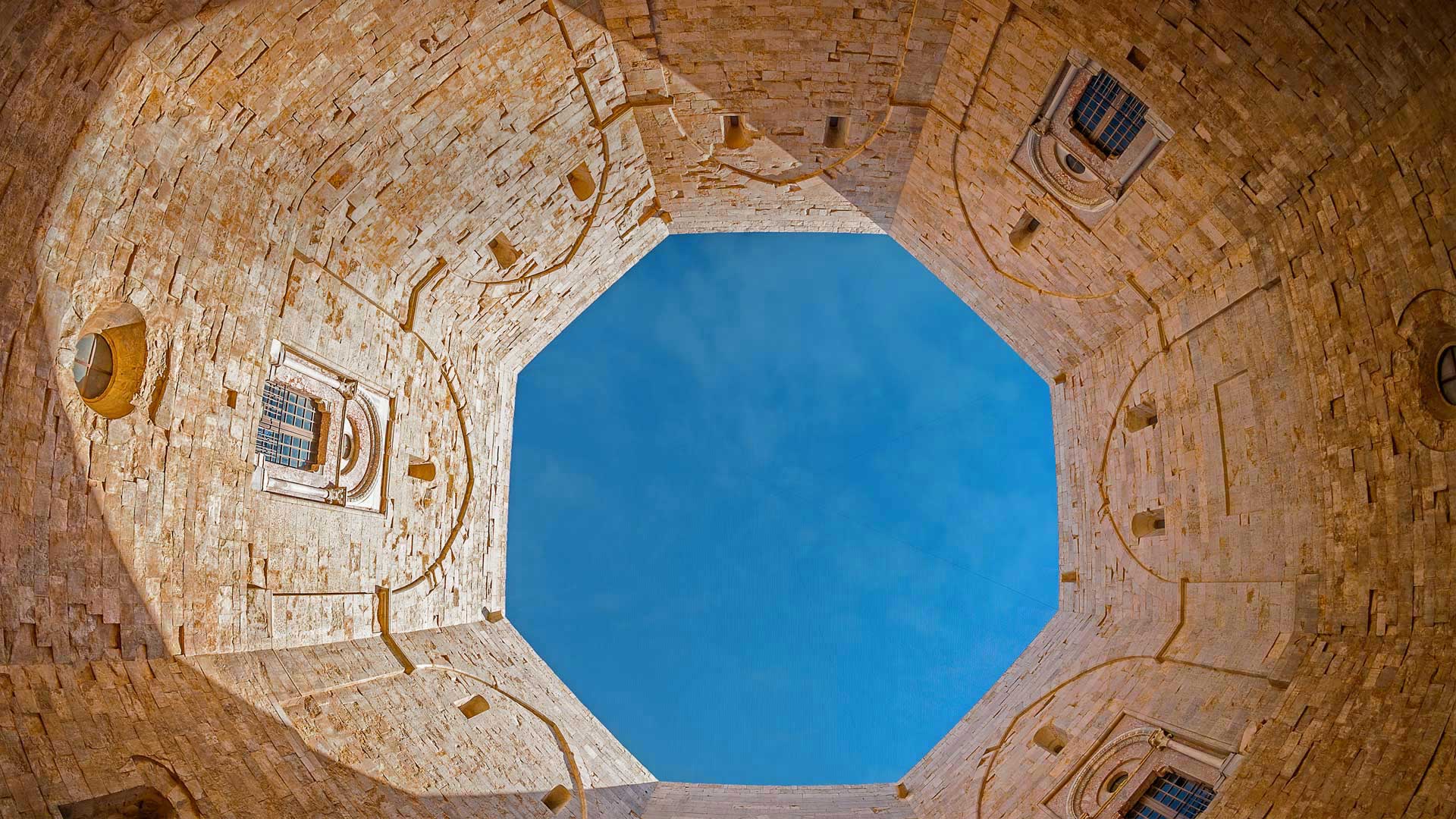蒙特城堡,意大利普利亚大区 Castel del Monte, Apulia, Italy (© Toni Spagone/Alamy)

蒙特城堡,意大利普利亚大区 Castel del Monte, Apulia, Italy (© Toni Spagone/Alamy)
An octagonal architectural treasure
Built in the 1240s by the Holy Roman Emperor Frederick II in southeast Italy, Castel del Monte (Castle of the Mount) features an unusual octagonal design. Eight stone walls stretch between eight octagonal towers and enclose an octagonal courtyard. Each of the two floors also has eight trapezoidal rooms. Acclaimed and protected as a World Heritage Site in 1966, the castle symbolically reflects a harmonious integration of classical Roman, Arabic, and medieval architecture and design—and to some, its octagonal symmetry suggests a connection between heaven and earth.
Its original purpose is unclear. Without a drawbridge, moat, or curtain wall to protect it, it was clearly not a defensive fortress, and its lack of stables call into question its function as a hunting lodge. Over the centuries it has served as a prison and as a refuge from the plague. But whatever the emperor's intention, he left a captivating monument that still enchants today.
八角形建筑瑰宝
蒙特城堡(山上城堡)建于1240年代,由神圣罗马皇帝腓特烈二世在意大利东南部建造,具有不同寻常的八角形设计。八堵石墙在八座八角形塔楼之间延伸,围绕着一个八角形庭院。两层楼各有八个梯形房间。1966年,这座城堡被誉为世界遗产,并受到保护。它象征性地反映了古典罗马、阿拉伯和中世纪建筑与设计的和谐结合,对某些人来说,它的八角对称性暗示着天地之间的联系。
其最初目的尚不清楚。由于没有吊桥、护城河或幕墙的保护,它显然不是一个防御堡垒,而且它没有马厩,这使它作为狩猎小屋的功能受到质疑。几个世纪以来,它一直被用作监狱和躲避瘟疫的避难所。但不管皇帝的意图是什么,他留下了一座迷人的纪念碑,至今仍令人着迷。
评论已关闭